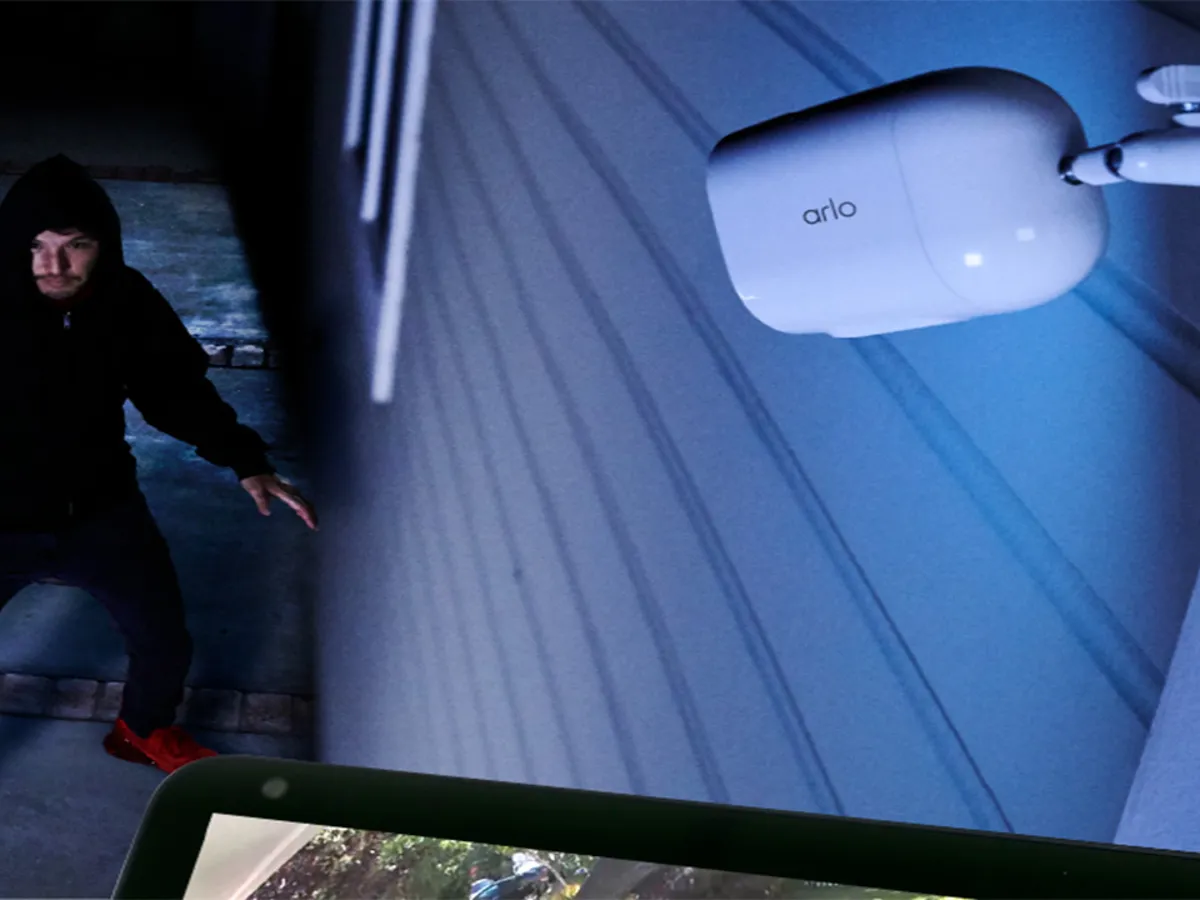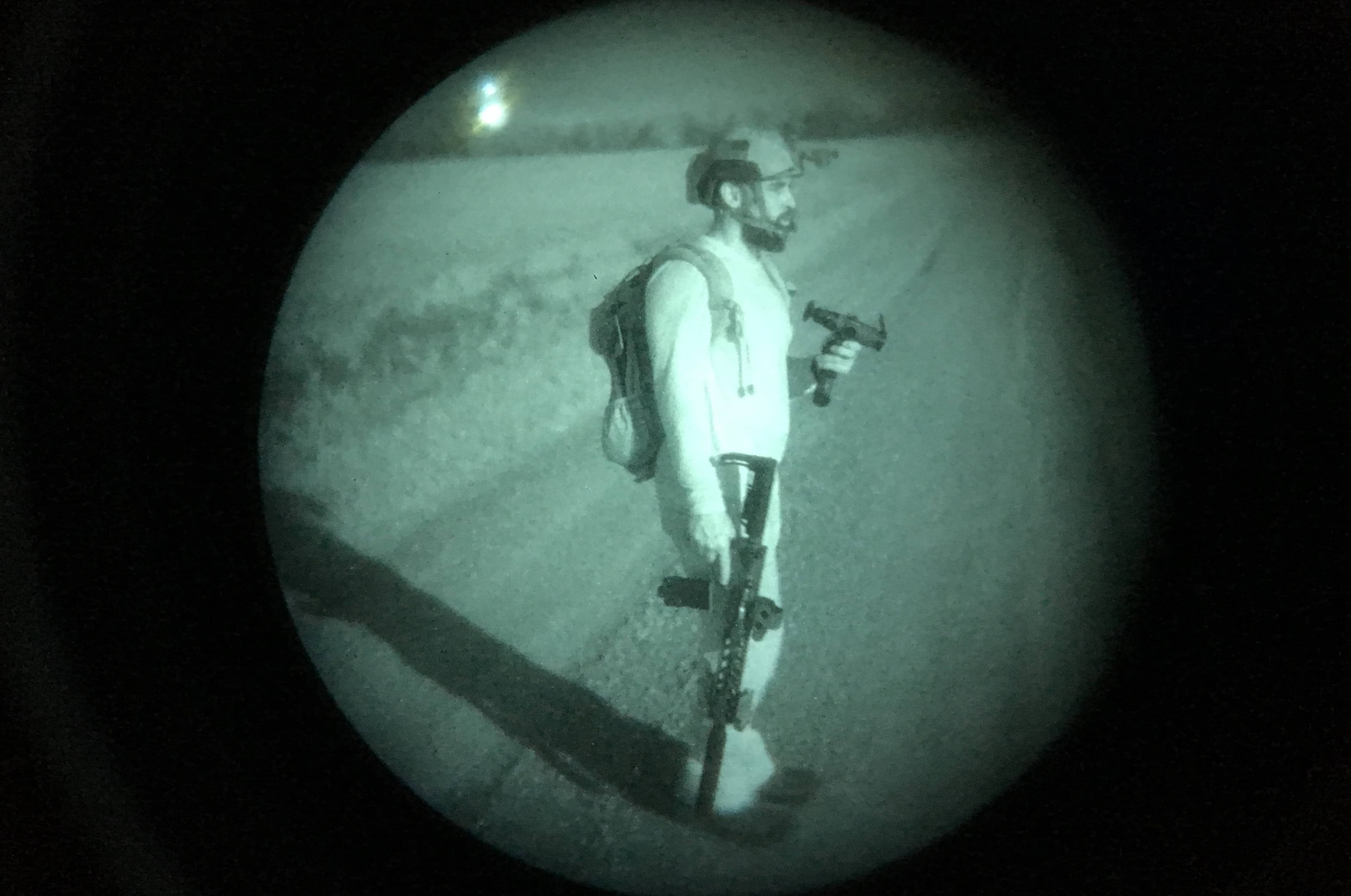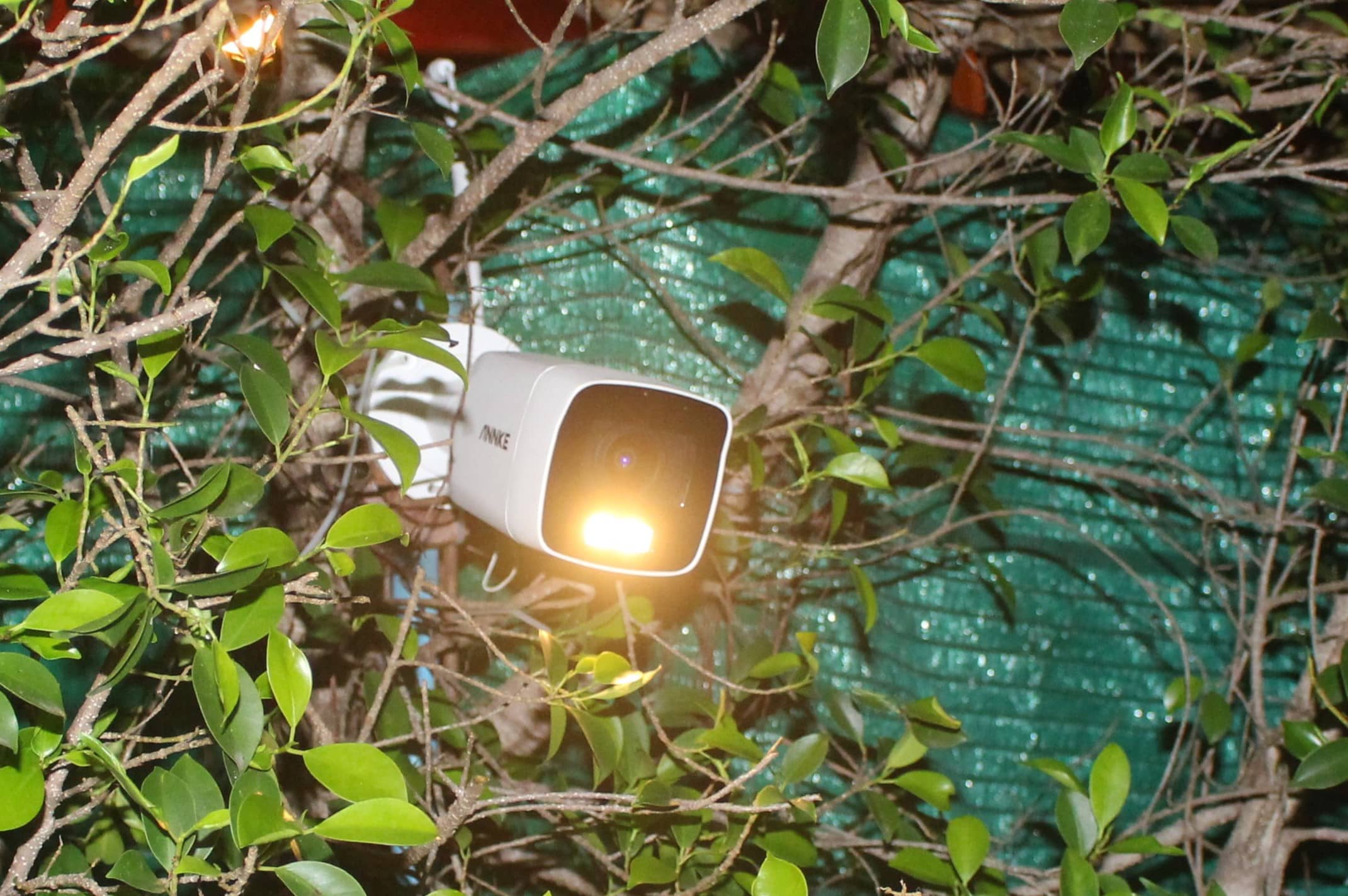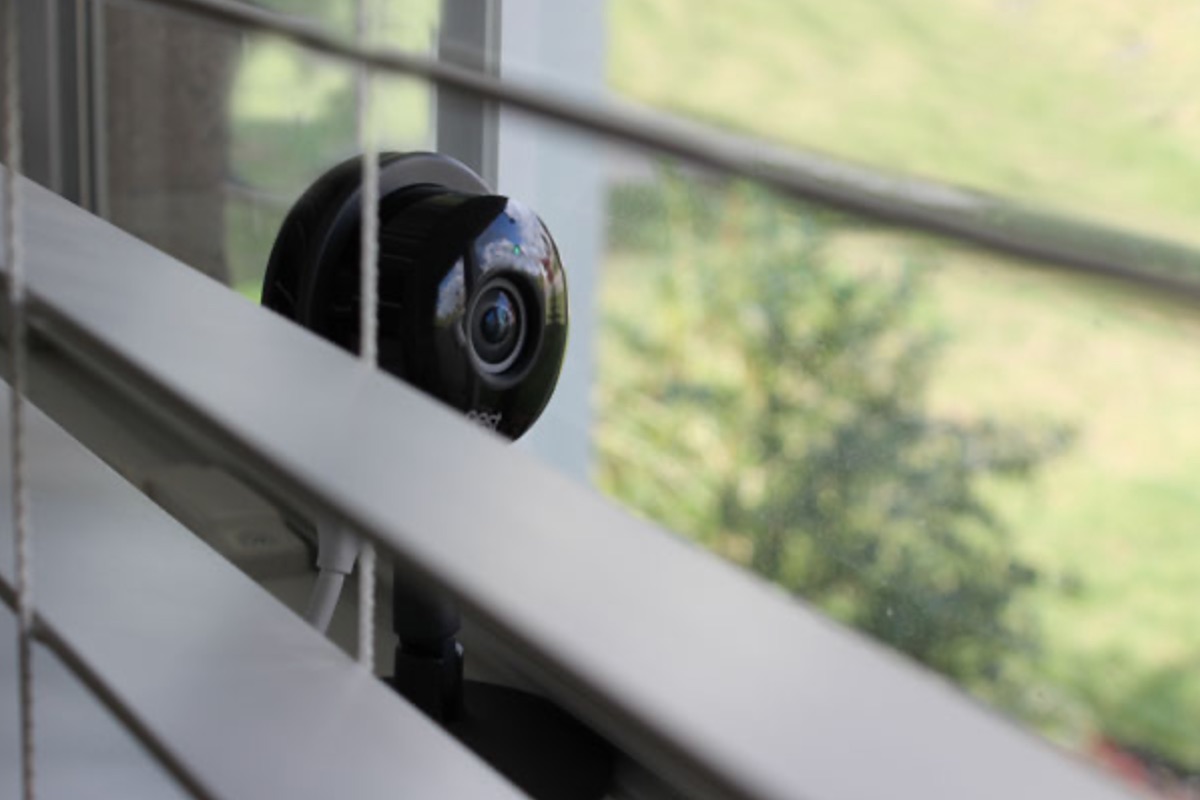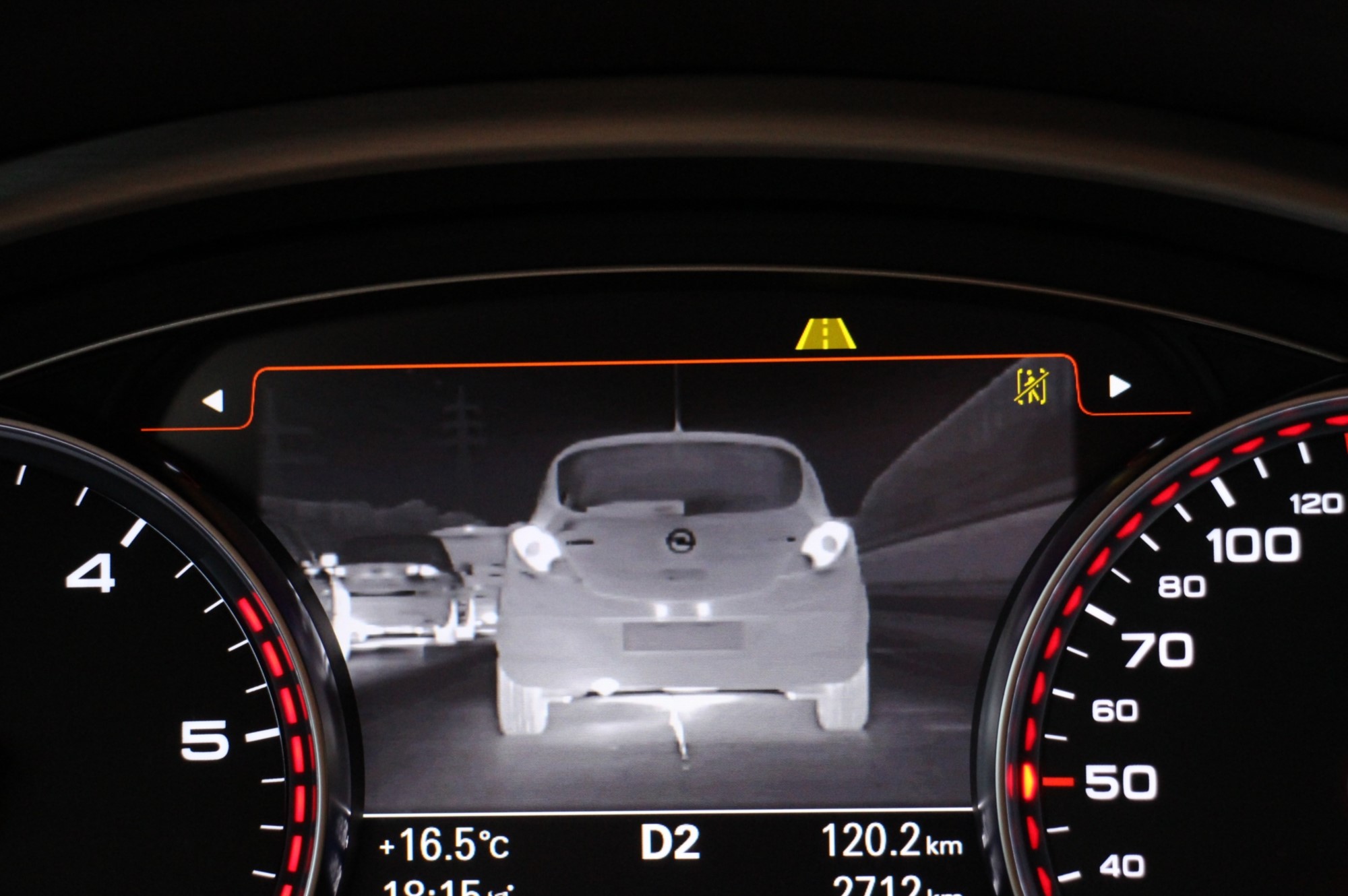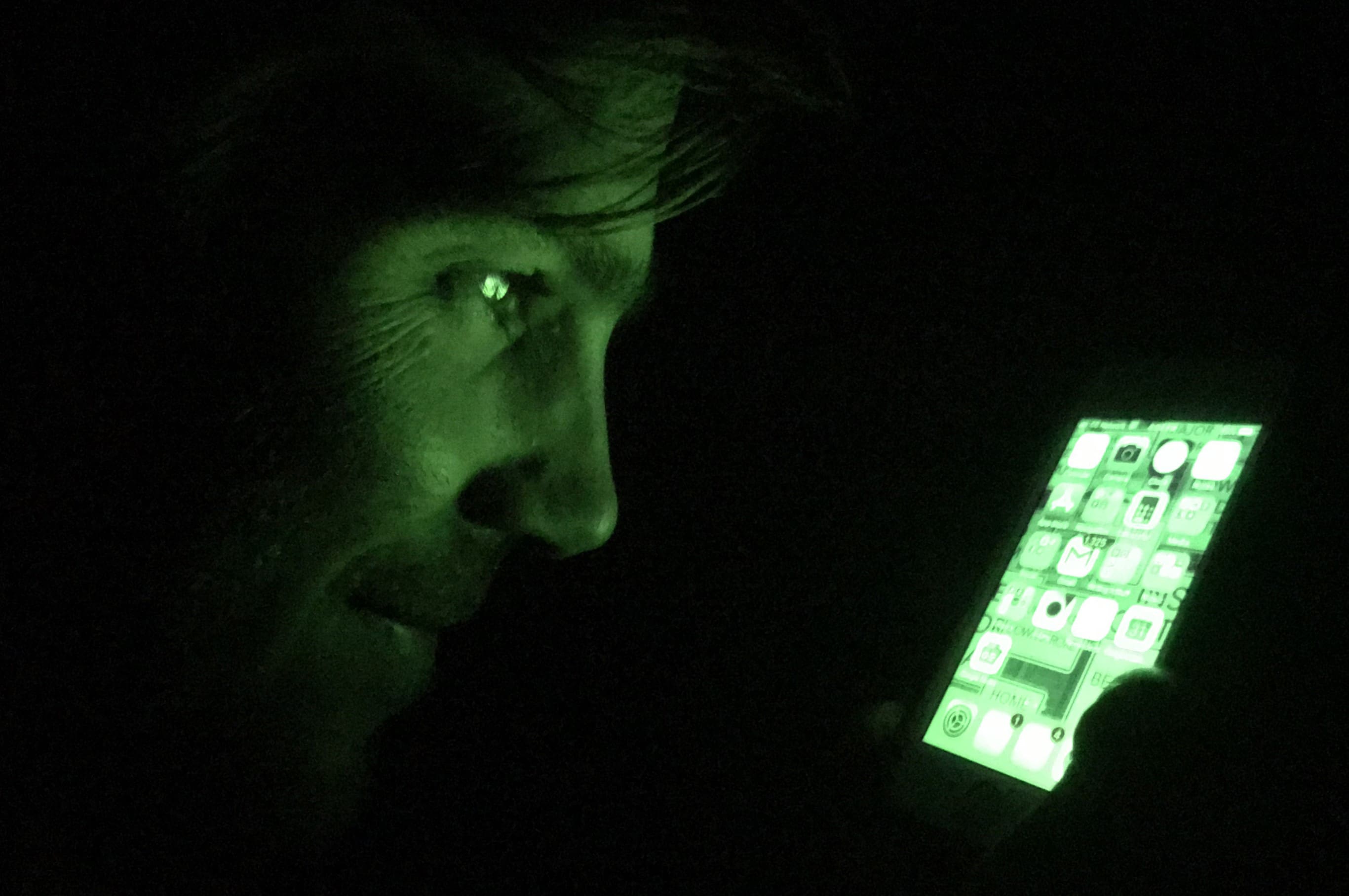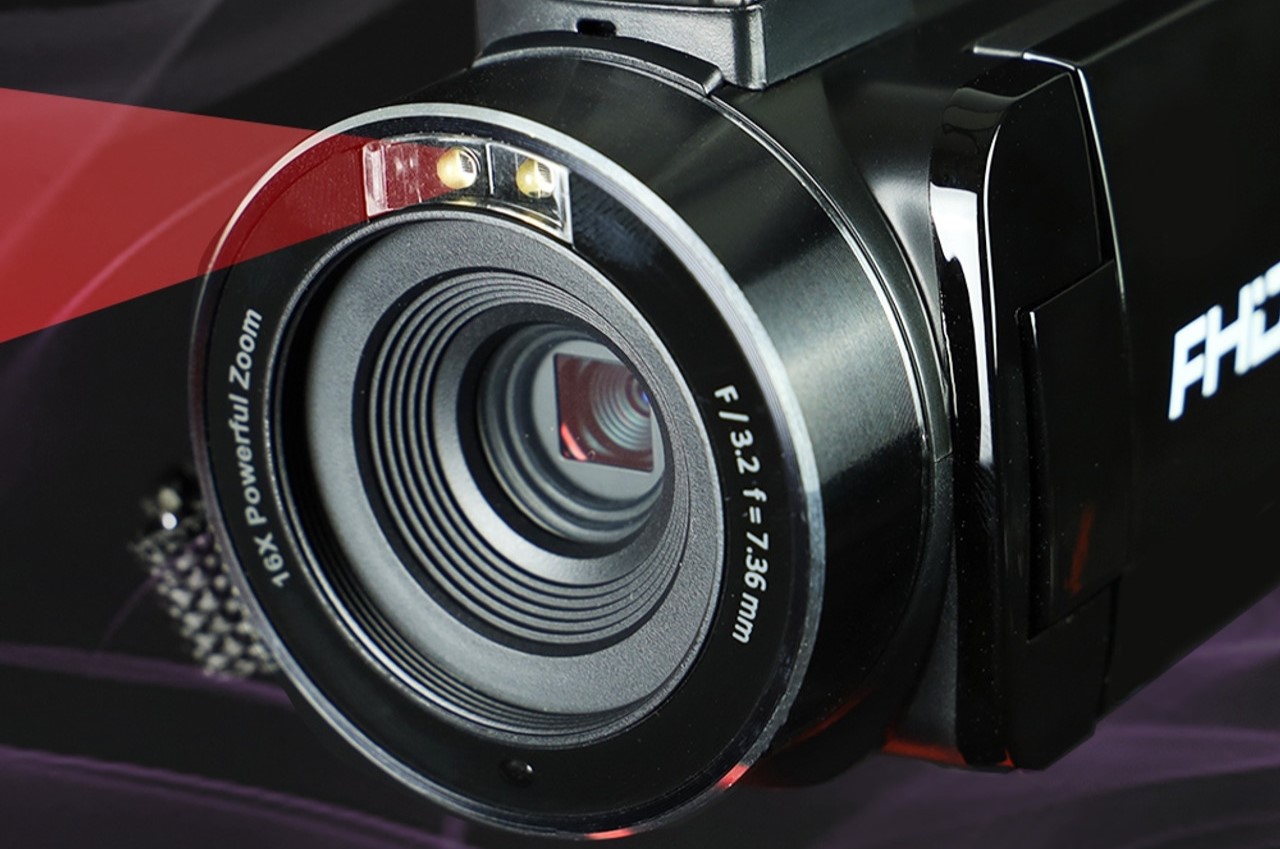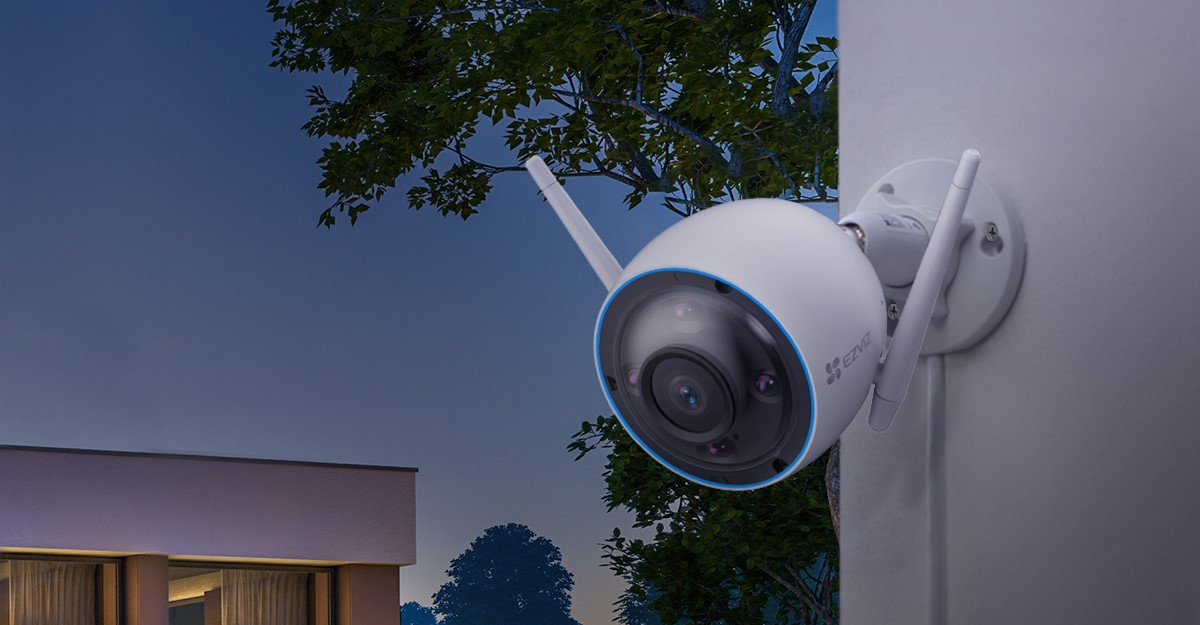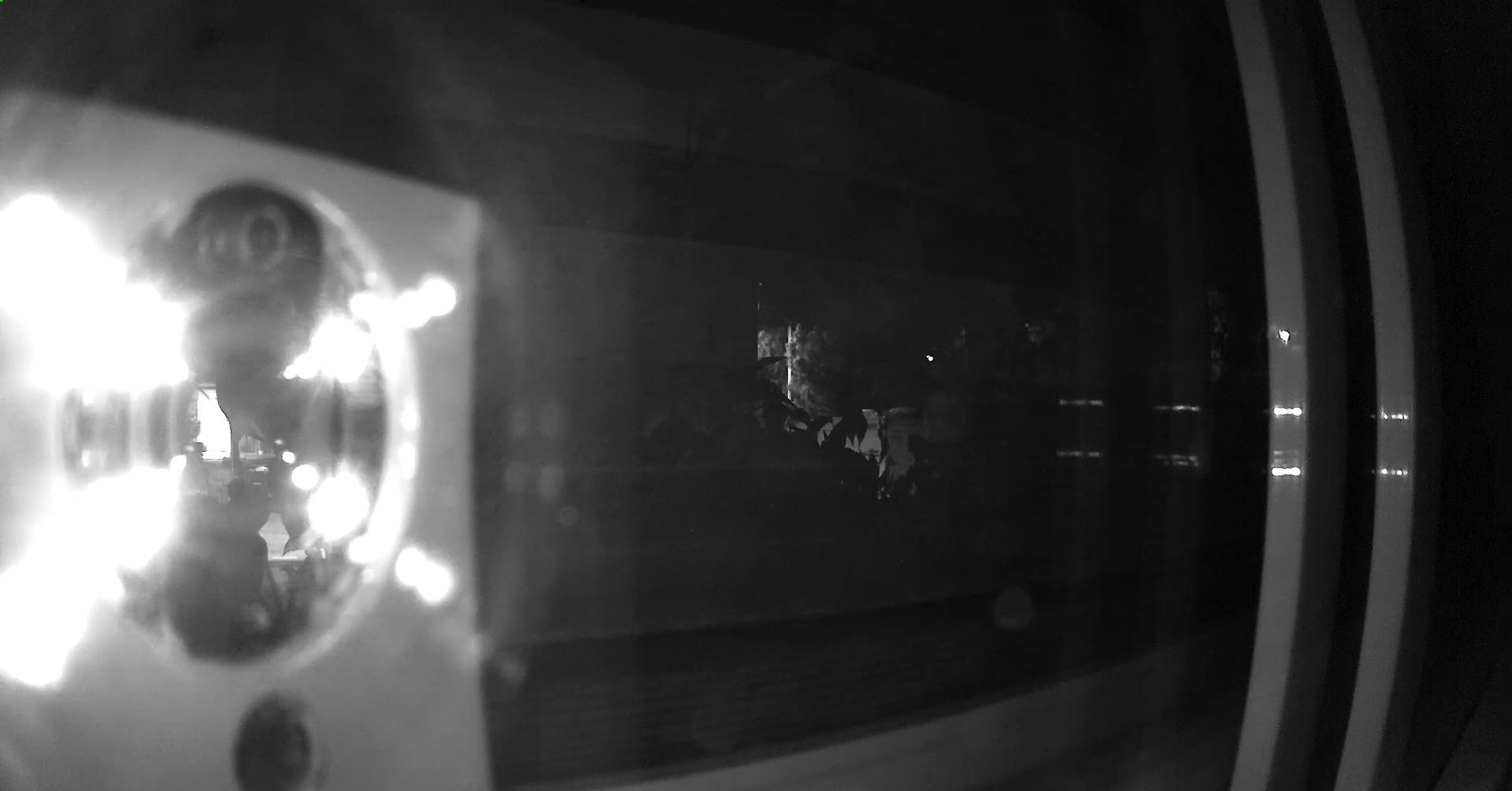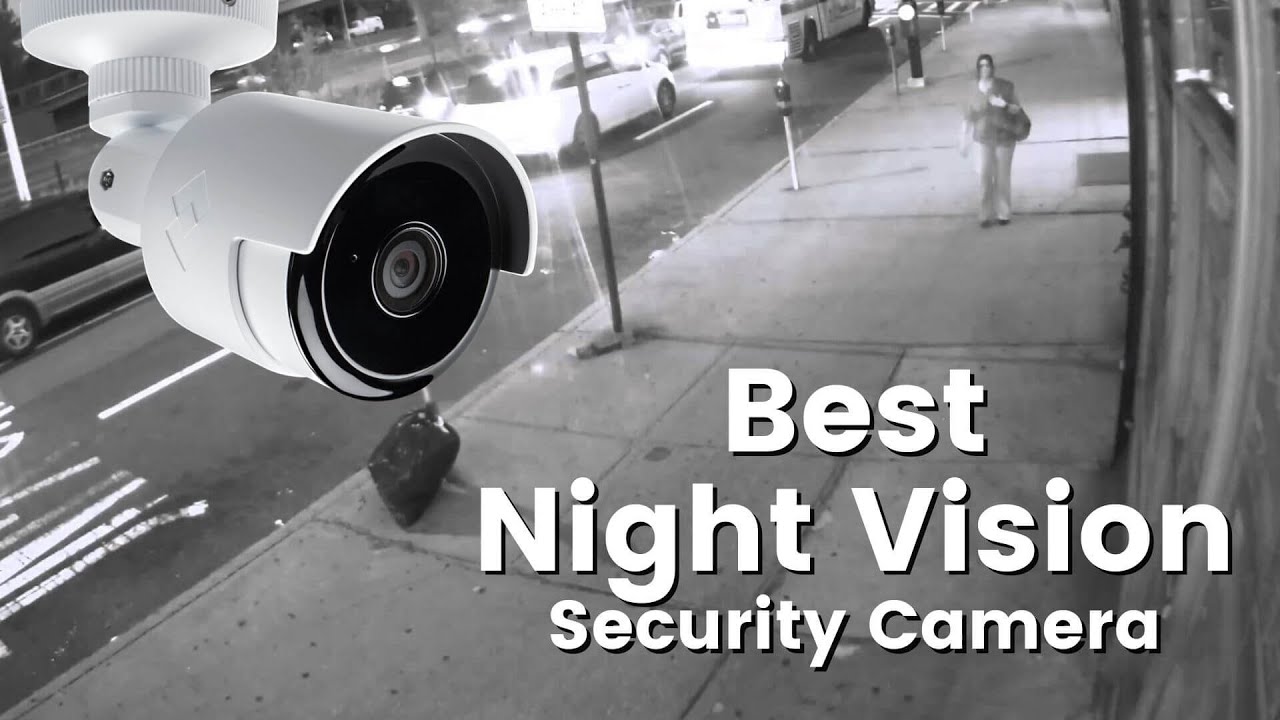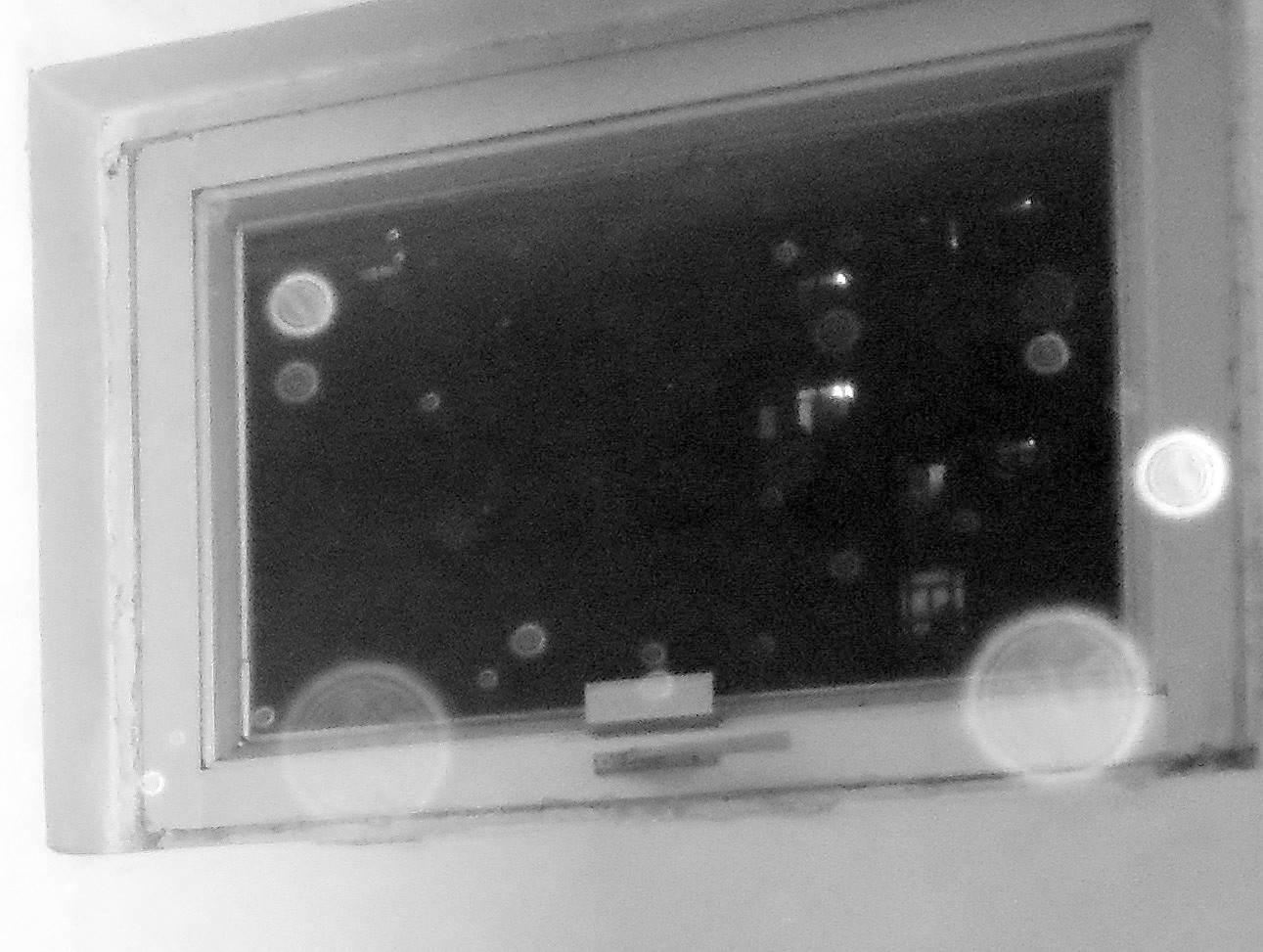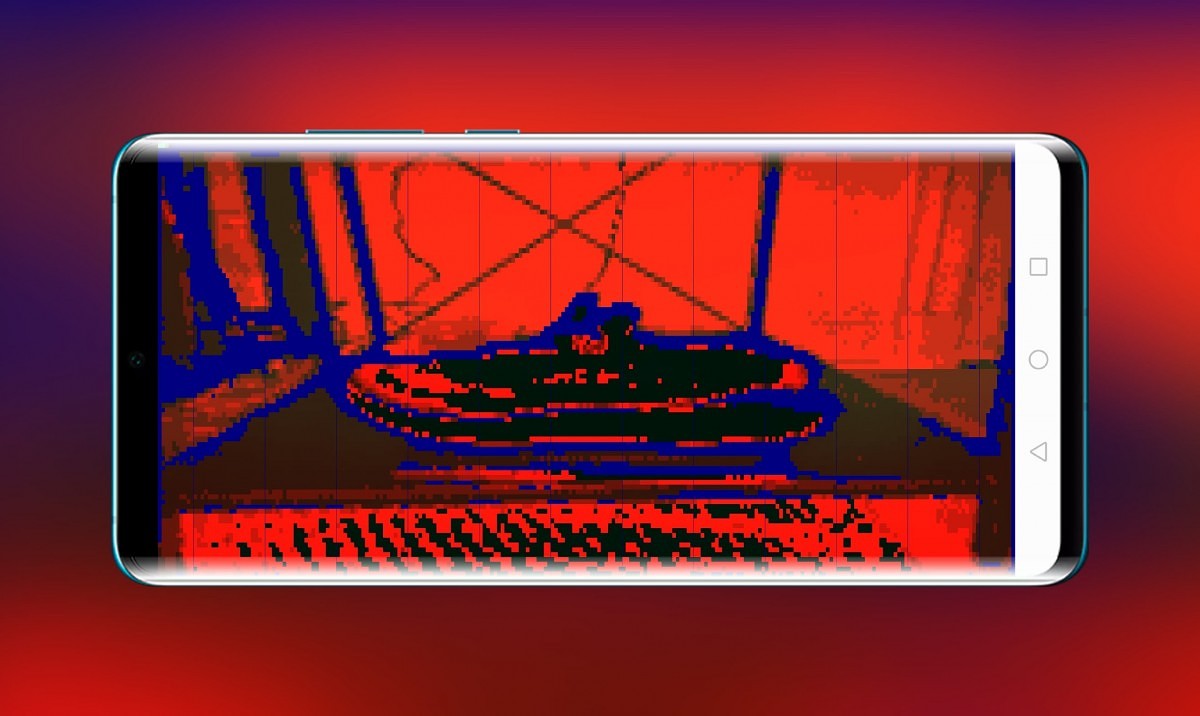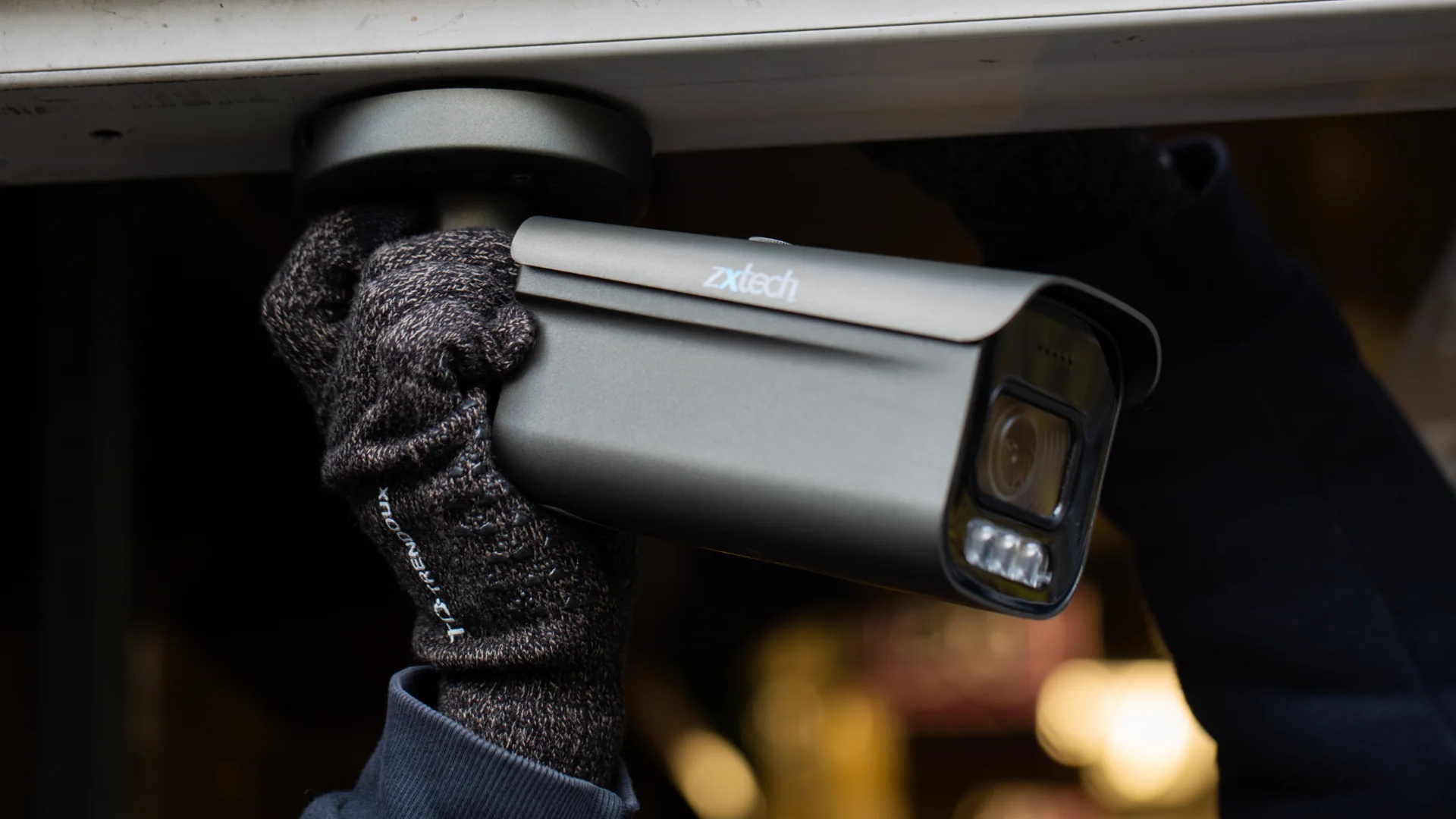Home>Home Security and Surveillance>How To Hide From Night Vision Cameras
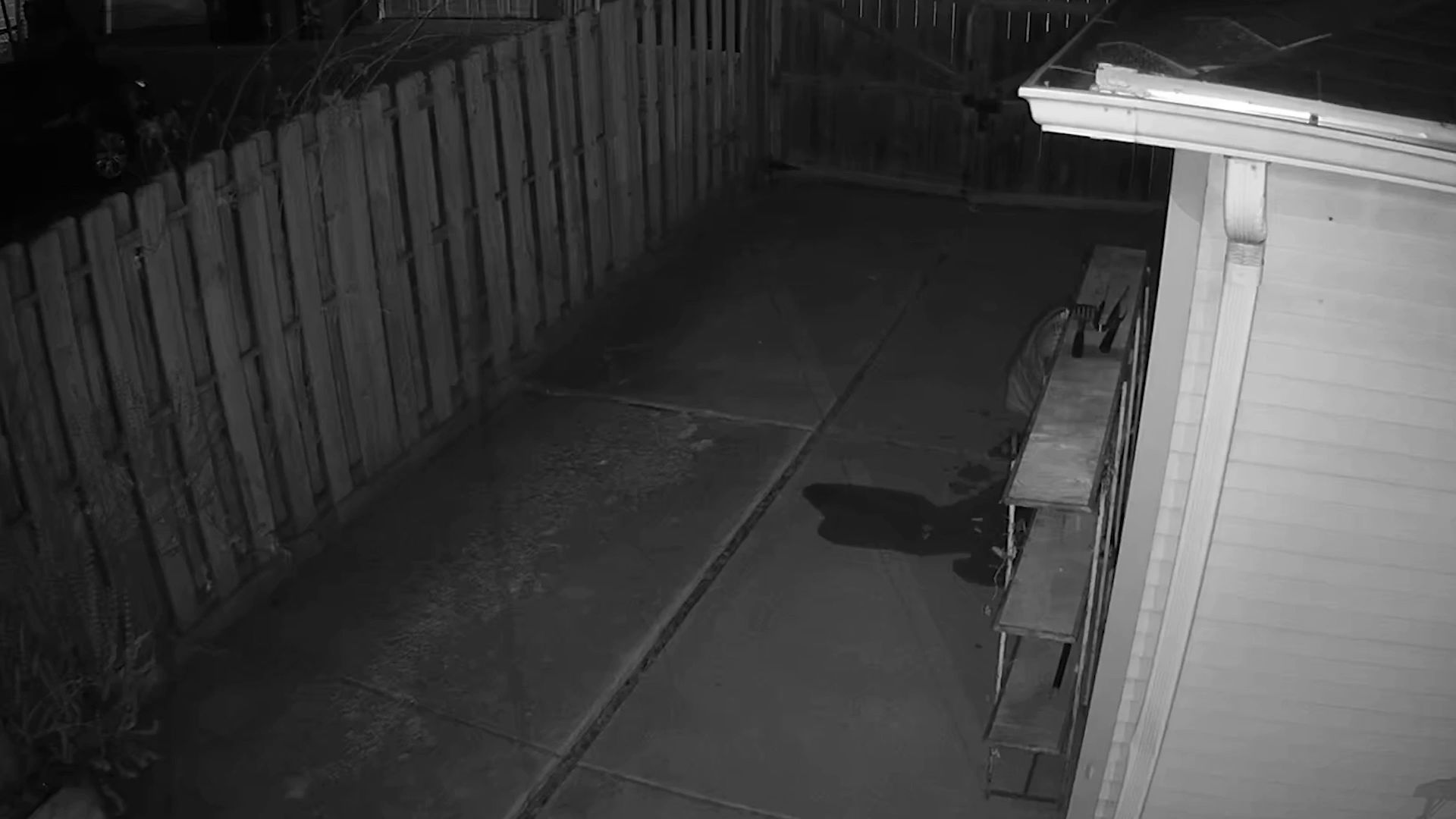

Home Security and Surveillance
How To Hide From Night Vision Cameras
Modified: March 6, 2024
Learn effective home security and surveillance techniques to hide from night vision cameras and protect your privacy.
(Many of the links in this article redirect to a specific reviewed product. Your purchase of these products through affiliate links helps to generate commission for Storables.com, at no extra cost. Learn more)
Introduction
Welcome to the world of home security and surveillance! With advancements in technology, there’s a wide range of home security systems available in the market. One such technology that has gained significant popularity is night vision cameras. These cameras provide clear visibility even in low-light or complete darkness, making them an essential tool for enhancing the security of your home.
However, despite their effectiveness, you may find yourself in a situation where you need to hide from these night vision cameras. This could be for various reasons, such as playing a fun game of hide-and-seek with friends or wanting to maintain your privacy. In this article, we will explore some common techniques that can help you hide from night vision cameras and ensure you remain undetectable.
But before we dive into the techniques, it’s important to understand how night vision cameras work. Night vision cameras utilize infrared (IR) technology to capture images and videos in low-light or no-light conditions. These cameras emit infrared light, which bounces off objects and is then captured by the camera’s sensor. The camera processes this infrared light and converts it into visible images.
Now that we have a basic understanding of night vision cameras, let’s explore some popular techniques you can use to hide from these cameras and master the art of staying invisible.
Key Takeaways:
- Master the art of hiding from night vision cameras by using camouflage, blocking infrared light, and understanding their limitations to stay undetected in thrilling games or when seeking privacy.
- Utilize natural terrain, avoid movement, and manage heat sources to enhance your stealth capabilities and increase your chances of remaining invisible to night vision cameras.
Read more: How To Fix A Night Vision Camera
Understanding Night Vision Cameras
Night vision cameras utilize advanced technology to capture clear images and videos even in the absence of visible light. They work by using infrared (IR) light, which is beyond the range of human vision but can be detected by the camera’s sensor.
These cameras are equipped with IR LEDs or infrared illuminators, which emit invisible IR light that illuminates the surroundings. When the light hits objects, it reflects back and is captured by the camera’s sensor. The sensor converts the infrared light into visible images or videos that can be seen on a monitor or recorded for later viewing.
There are different types of night vision cameras available, including active infrared (IR) cameras and passive thermal cameras. Active IR cameras emit their own IR light, while passive thermal cameras detect the heat emitted by objects to create images. Both types of cameras are commonly used in home security systems and have their own advantages and limitations.
Active IR cameras are effective in capturing clear images, even in complete darkness. They usually have a higher resolution and provide detailed imagery. However, they have a limited range of IR illumination, which means their effectiveness decreases with distance. Additionally, active IR cameras can be easily detected by looking for the telltale red glow emitted by the IR LEDs.
On the other hand, passive thermal cameras are excellent at detecting heat signatures. They can capture images based on the heat emitted by objects, making them useful for detecting living creatures or intruders in the dark. However, passive thermal cameras often have lower image quality compared to active IR cameras, and they may struggle with accurately identifying objects at a distance.
Understanding the capabilities and limitations of night vision cameras is crucial when devising strategies to hide from them. By knowing how they work, you can better determine which techniques will be most effective in avoiding detection.
Common Techniques to Hide from Night Vision Cameras
When it comes to hiding from night vision cameras, there are several techniques you can employ to increase your chances of remaining undetected. These techniques involve manipulating your environment, utilizing various materials, and understanding the limitations of night vision technology. Let’s explore some of the most common techniques:
- Camouflage: The art of blending in with your surroundings is an effective technique to hide from night vision cameras. By wearing clothing or using materials that match the colors and textures of the environment, you can make it difficult for the cameras to distinguish you from the background. Utilize camouflage patterns or natural foliage to break up your silhouette and blend into the surroundings.
- Blocking Infrared Light: Infrared light is the key element utilized by night vision cameras to capture images. By using materials that effectively block or absorb infrared light, you can hinder the camera’s ability to detect your presence. Look for clothing or accessories made of materials like thick fabric, non-reflective surfaces, or infrared-absorbing materials to minimize your infrared signature.
- Modifying Clothing and Accessories: Another technique is to modify your clothing and accessories to disrupt the infrared patterns on your body. This can be achieved by adding reflective materials or attaching infrared reflectors to strategic areas such as your chest or limbs. By reflecting the infrared light away from your body, you can make it more challenging for the cameras to detect you.
- Utilizing Natural Terrain and Objects: Taking advantage of the natural terrain and objects around you can greatly aid in hiding from night vision cameras. Seek out areas with dense vegetation, shadows, or obstacles that can obstruct the camera’s view. By positioning yourself behind trees, bushes, or other objects, you can create visual barriers that make it harder for the cameras to spot you.
- Avoiding Movement and Heat Sources: Night vision cameras are highly sensitive to movement and heat signatures. To avoid detection, try to minimize your movement as much as possible. Move slowly and cautiously, using cover and the natural environment to your advantage. Additionally, be mindful of heat-producing sources such as your body heat or heat-emitting objects. Stay still and avoid areas where your heat signature may stand out from the surroundings.
Keep in mind that the effectiveness of these techniques may vary depending on the specific night vision camera used. Some cameras may have advanced features that can overcome certain hiding techniques. It’s essential to understand the capabilities and limitations of the camera you are trying to avoid.
By employing these common techniques and understanding how night vision cameras work, you can increase your chances of successfully hiding from surveillance and enjoy a thrilling game of hide-and-seek or maintain your privacy when needed.
Using Camouflage
Camouflage is a tried-and-true technique that has been used for centuries to blend in with the surroundings and remain hidden from prying eyes. When it comes to hiding from night vision cameras, utilizing effective camouflage strategies can significantly increase your chances of remaining undetected. Let’s explore some key techniques for using camouflage:
- Selecting the Right Clothing: Choosing the right clothing that matches the colors and textures of the environment is crucial. Look for clothing that blends well with the natural surroundings, such as earth tones, greens, or browns. Avoid reflective materials, bright colors, and patterns that may stand out in the camera’s view.
- Using Natural Foliage: Utilize natural foliage and vegetation to your advantage. If possible, attach small branches, leaves, or grass to your clothing or accessories to break up your silhouette and mimic the surrounding environment. This can help you blend seamlessly into the background, making it difficult for night vision cameras to distinguish you from your surroundings.
- Applying Face Paint or Camouflage Cream: Covering exposed skin, especially the face, with face paint or camouflage cream can effectively hide your features from night vision cameras. Use colors that match the environment and apply patches or stripes to break up the natural lines of your face. This will make it harder for the cameras to recognize you as a distinct object.
- Using Camouflage Nets or Ghillie Suits: Camouflage nets and ghillie suits are specially designed to provide optimal concealment. Camouflage nets can be used to create a natural barrier between you and the sight of night vision cameras. Ghillie suits, on the other hand, are full-body suits made of synthetic or natural materials that mimic the appearance of foliage. These suits effectively break up your silhouette and provide superb camouflage.
- Assessing the Environment: Before attempting to hide, take the time to understand the environment you’ll be navigating. Look for natural hiding spots, such as dense forests, thick underbrush, or areas with shadows and low light. Position yourself strategically to maximize your camouflage and blend seamlessly into the surroundings.
Remember, the key to successful camouflage is to mimic the natural environment and break up your silhouette. By utilizing appropriate clothing, natural foliage, face paint, and specialized camouflage gear, you can increase your chances of remaining invisible to night vision cameras and effectively hide from surveillance. Practice these techniques in different environments to determine their effectiveness and fine-tune your camouflage skills.
Blocking Infrared Light
Blocking infrared light is a fundamental technique for hiding from night vision cameras. By preventing the cameras from detecting the infrared light you emit, you significantly reduce the chances of being spotted. Here are some effective methods for blocking infrared light:
- Thick Fabrics and Non-Reflective Surfaces: Clothing made from thick fabrics can effectively block infrared light from reaching your body. Look for materials like wool, denim, or polyester blends that have a high opacity to infrared light. Additionally, choose clothing with a matte or non-reflective finish to minimize the chances of infrared light reflection.
- Specialized Infrared-Blocking Materials: In recent years, specific materials have been developed to absorb or block infrared light. These materials, such as infrared-blocking fabrics or films, are designed to prevent the transmission of infrared wavelengths. When incorporated into clothing or accessories, they can significantly reduce your infrared signature and make it harder for night vision cameras to detect you.
- Using Infrared-Absorbing Products: Infrared-absorbing products, such as sprays or creams, can be applied to your exposed skin to reduce your thermal signature. These products work by absorbing the infrared light emitted by your body, making it more challenging for night vision cameras to detect your heat. Look for products specifically designed for infrared absorption and follow the instructions for proper application.
- Using Infrared-Reflecting Materials: On the flip side, you can also consider using materials that reflect infrared light away from you. By redirecting the infrared light elsewhere, you confuse the camera’s sensor and make it harder for them to capture your image. Look for accessories like reflective sheets, infrared reflectors, or clothing with added reflective elements.
Combining these techniques with proper positioning and strategic planning can further enhance your invisibility to night vision cameras. Remember that blocking infrared light is a crucial aspect of remaining hidden, as these cameras heavily rely on detecting infrared wavelengths. Experiment with different materials and methods to find what works best for your specific situation and environment.
Keep in mind that no method is foolproof, and the effectiveness of blocking infrared light may vary depending on the specific night vision camera being used. Stay informed about the latest advancements in night vision technology to understand any new challenges or improvements in infrared detection capabilities.
By diligently applying these techniques and staying vigilant, you can increase your chances of successfully blocking infrared light and staying hidden from prying eyes.
Wear dark, non-reflective clothing and use infrared lights to disrupt the night vision camera’s ability to capture your image.
Read more: How To Blind A Night Vision Camera
Modifying Clothing and Accessories
Modifying your clothing and accessories is an effective strategy to confuse night vision cameras and make it harder for them to detect your presence. By altering certain elements, you can disrupt the infrared patterns on your body and decrease your chances of being identified. Here are some techniques for modifying clothing and accessories:
- Adding Reflective Materials: One technique is to strategically place reflective materials on your clothing or accessories. These materials can create confusion for night vision cameras by reflecting infrared light away from your body. Attach reflective patches, strips, or stickers to various parts of your outfit, such as your chest, arms, or legs, to disperse the light and make it difficult for cameras to capture your image.
- Attaching Infrared Reflectors: Another option is to attach infrared reflectors to your clothing or accessories. These small devices are specifically designed to reflect infrared light, making it appear as if the light is coming from a different direction. By redirecting the light away from your body, you can effectively blur your infrared signature and confuse the night vision cameras.
- Using Infrared-Blocking Accessories: Consider incorporating accessories made from materials that block or absorb infrared light. Items like gloves, hats, scarves, or even face masks made from infrared-blocking fabrics can help reduce your infrared signature. These accessories can be particularly useful for covering body parts that are more likely to emit infrared light, such as your hands, head, and face.
- Modifying Footwear: Your footwear can also play a role in hiding from night vision cameras. Avoid wearing shoes with reflective surfaces or bright colors that may stand out. Instead, opt for black or dark-colored footwear that blends in with the environment. Additionally, consider attaching strips of infrared-blocking materials to the soles or lower parts of your shoes to minimize any infrared reflection from the ground.
- Disrupting Body Patterns: Night vision cameras rely on detecting patterns and contours of objects. By breaking up the natural lines and shapes of your body, you make it harder for the cameras to recognize you. Use clothing with irregular patterns, such as camouflage or disruptive coloration, to blur your body’s outlines and make it more challenging for the cameras to identify specific features.
Experiment with these modification techniques to find the combination that works best for your specific needs and environment. Remember to strike a balance between effectively disrupting the infrared patterns and maintaining comfort and mobility. It’s crucial to assess the effectiveness of these modifications under different lighting conditions and against various types of night vision cameras to ensure optimal hide-and-seek capabilities.
While modifying your clothing and accessories can enhance your ability to hide from night vision cameras, always stay informed about the latest advancements in night vision technology. Night vision cameras are continuously evolving, and new detection techniques may emerge. Stay one step ahead by staying up-to-date with the latest developments and adapting your strategies accordingly.
By creatively modifying your clothing and accessories, you can successfully confuse night vision cameras and increase your chances of remaining undetected.
Utilizing Natural Terrain and Objects
One of the most effective techniques for hiding from night vision cameras is utilizing the natural terrain and objects around you. By leveraging your environment and strategically positioning yourself, you can create visual barriers that make it incredibly difficult for the cameras to spot you. Here are some key strategies for utilizing natural terrain and objects to hide from night vision cameras:
- Seeking Natural Hiding Spots: When in an outdoor environment, look for natural hiding spots that provide visual cover. This can include dense forests, thick underbrush, or areas with tall grass or foliage. These natural elements create visual barriers that help to break up your silhouette and make it harder for night vision cameras to distinguish you from your surroundings.
- Positioning Yourself Behind Objects: Utilize any objects or structures in the area to your advantage. Position yourself behind trees, bushes, rocks, or any other objects that can obstruct the camera’s view. Remember to assess the camera’s field of view and position yourself in locations that are outside their line of sight or create visual obstacles to decrease your chances of detection.
- Using Shadows and Low-Light Areas: Shadows and areas with low light can be incredibly useful for hiding from night vision cameras. Position yourself in shadowy areas or areas with limited lighting to reduce your visibility. Shadows and low-light areas obscure your features and make it challenging for camera sensors to capture clear images of you.
- Blending with Natural Landscapes: Study the natural landscape and blend in with the surroundings. If you’re in a wooded area, wear clothing that matches the colors and textures of the forest. If you’re in a rocky or desert terrain, opt for clothing that blends with the sandy or rocky hues. By assimilating with the environment, you make it much harder for night vision cameras to spot you.
- Using Natural Sounds and Distractions: Create distractions or use natural sounds to divert attention away from your true location. Rustle leaves, knock on trees, or mimic animal sounds to draw the focus of the cameras elsewhere. By adding an element of confusion and misdirection, you increase the chances of remaining hidden from surveillance.
Remember to move slowly and purposefully when navigating your environment. Sudden movements can attract attention and increase the chances of being detected. Stay mindful of your surroundings and adapt your hiding techniques based on the specific terrain and landscape.
Utilizing the natural terrain and objects to hide from night vision cameras not only increases your chances of staying undetected but also adds an element of excitement and challenge to your hide-and-seek game. By being resourceful and thinking creatively, you can master the art of utilizing the natural environment to your advantage.
Avoiding Movement and Heat Sources
Avoiding movement and managing heat sources are crucial components of successfully hiding from night vision cameras. These cameras are highly sensitive to both movement and heat signatures. By minimizing movement and reducing your thermal presence, you significantly decrease the chances of being detected. Here are some techniques for avoiding movement and heat sources:
- Move Slowly and Cautiously: Rapid or sudden movements can catch the attention of night vision cameras. To avoid detection, move slowly and cautiously, taking measured steps and maintaining a low profile. This will minimize any noticeable changes in the camera’s view, making it more challenging for them to track your movement.
- Use Cover and Concealment: Make use of cover and concealment to reduce your visibility and limit the camera’s line of sight. Move behind objects, foliage, or any available cover that can shield you from the cameras’ view. Use the natural environment to your advantage and position yourself strategically to avoid being in direct line with the cameras’ sensors.
- Minimize Body Heat: Night vision cameras can detect heat signatures, including your body heat. To reduce your thermal presence, take steps to minimize your body heat emissions. Dress in layers to regulate your body temperature and avoid overheating. Consider wearing clothing made from breathable fabrics that wick away moisture, as excessive sweating can increase your thermal signature.
- Avoid Heat-Producing Sources: Be mindful of heat sources in your surroundings, as they can give away your position to the night vision cameras. Stay away from sources of heat, such as fires, vehicle engines, or electronic devices that emit excessive heat. Heat sources can create a stark contrast against the cooler background, making you more conspicuous to the cameras.
- Control your Breathing: Your breath can also generate heat that may be picked up by night vision cameras. Try to control your breathing, taking slow and shallow breaths to minimize the release of warm air. This can help reduce any thermal signature coming from your mouth or nose, making it harder for the cameras to detect you in close quarters.
Remember, even the slightest movements or changes in thermal patterns can potentially give away your presence to night vision cameras. Being aware of your surroundings, moving cautiously, and reducing your heat emissions are essential for successfully hiding from surveillance.
It’s also important to note that different types of night vision cameras may have varying sensitivities to movement and heat. Stay informed about the specific cameras you are trying to evade, and adapt your hiding strategies accordingly.
By mastering the art of avoiding movement and managing heat sources, you can enhance your stealth capabilities and increase your chances of remaining undetected by night vision cameras.
Conclusion
Hiding from night vision cameras can be an exciting and challenging endeavor, whether you’re engaging in a game of hide-and-seek or seeking privacy in your surroundings. Understanding the technology behind night vision cameras and implementing effective hiding techniques is key to successfully avoiding detection.
We explored various strategies that can help you hide from night vision cameras, including utilizing camouflage, blocking infrared light, modifying clothing and accessories, utilizing natural terrain and objects, and avoiding movement and heat sources. Each technique plays a crucial role in enhancing your ability to remain undetected.
Camouflage provides an opportunity to blend seamlessly with your surroundings, disrupt your silhouette, and make it challenging for night vision cameras to spot you. Blocking infrared light through the use of infrared-absorbing materials or non-reflective surfaces helps minimize your infrared signature, making it harder for the cameras to detect your presence.
Modifying clothing and accessories, such as adding reflective materials or infrared reflectors, can confuse the cameras and further decrease your chances of being identified. Utilizing natural terrain and objects creates visual barriers that obstruct the camera’s view, while avoiding movement and managing heat sources reduces the likelihood of attracting attention.
Remember, no hiding technique is foolproof, and the effectiveness may vary based on the specific night vision camera being used. Additionally, staying informed about advancements in night vision technology will allow you to adapt your strategies accordingly.
By combining these techniques, being resourceful, and thinking creatively, you can significantly increase your chances of remaining hidden from night vision cameras. However, always prioritize safety and legality when engaging in hide-and-seek activities or any other endeavors that involve avoiding surveillance. Respect boundaries and seek permission when necessary.
So, whether you’re embarking on a thrilling game of hide-and-seek or simply seeking privacy in your environment, use these techniques to master the art of hiding from night vision cameras and enjoy the excitement of remaining undetected.
Frequently Asked Questions about How To Hide From Night Vision Cameras
Was this page helpful?
At Storables.com, we guarantee accurate and reliable information. Our content, validated by Expert Board Contributors, is crafted following stringent Editorial Policies. We're committed to providing you with well-researched, expert-backed insights for all your informational needs.
